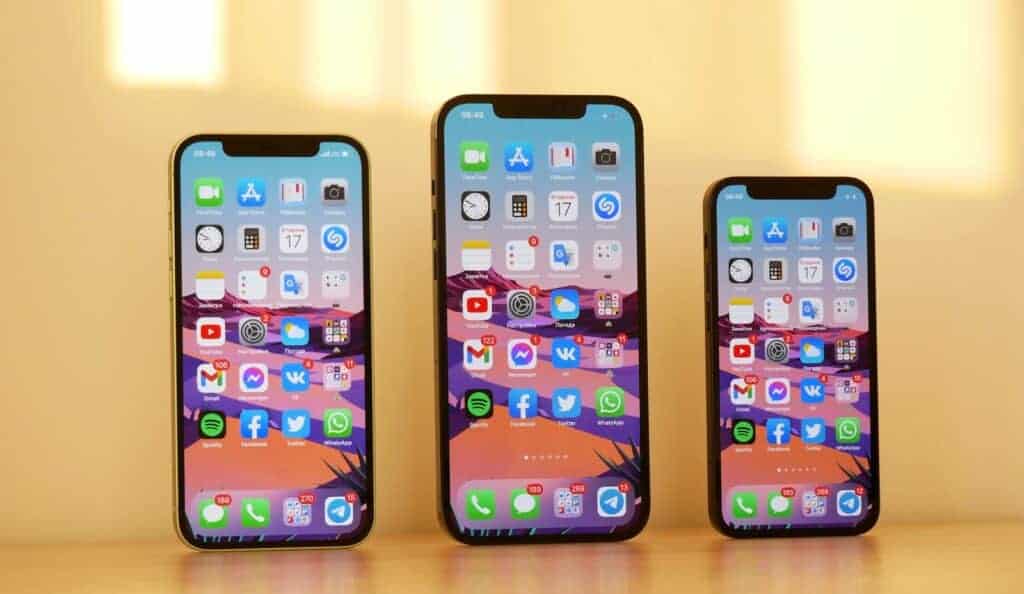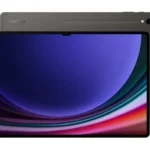Mobile technology has transformed communication and connectivity worldwide. It encompasses portable devices like smartphones, tablets, and smartwatches that enable users to access information and services on the go. Mobile technology allows people to make calls, send messages, browse the internet, and use various apps from almost anywhere.
These devices connect through wireless networks, including cellular networks and Wi-Fi. The technology has evolved rapidly, from basic cell phones to today’s powerful smartphones. Modern mobile devices function as mini-computers, capable of tasks once limited to desktop machines.
Mobile technology impacts various aspects of life. It changes how people work, learn, shop, and interact. Businesses use mobile tech for improved productivity and customer engagement. In education, it enables remote learning and access to educational resources. The convenience and functionality of mobile devices continue to shape society and drive innovation.
Understanding Mobile Technology: Key Concepts
Mobile technology has revolutionized how we communicate, access information, and interact with the world. From smartphones to tablets and wearable devices, mobile technology has become an integral part of our daily lives. Let’s explore some key concepts that help us understand this dynamic field:
1. Mobile Devices
At the heart of mobile technology are the devices themselves. These portable, wireless-enabled gadgets include:
- Smartphones: These versatile devices combine communication features with powerful computing capabilities, internet access, and a wide array of applications.
- Tablets: Larger than smartphones, tablets offer a more immersive experience for tasks like browsing, watching videos, and reading.
- Wearable Devices: Smartwatches, fitness trackers, and augmented reality (AR) glasses extend mobile technology to our bodies, providing new ways to track health, access information, and interact with our surroundings.
2. Wireless Networks
Mobile devices rely on wireless networks to connect to the internet and other devices. Key wireless technologies include:
- Cellular Networks: These networks use radio waves to provide voice and data services to mobile devices. Different generations of cellular technology (3G, 4G, 5G) offer varying speeds and capabilities.
- Wi-Fi: This technology uses radio waves to create local area networks (LANs), enabling devices to connect to the internet and each other within a limited range.
- Bluetooth: This short-range wireless technology allows devices to communicate with each other, such as connecting a smartphone to a wireless headset or speaker.

3. Mobile Operating Systems
Mobile operating systems (OS) are the software that powers mobile devices, providing the interface and foundation for applications to run. The dominant mobile OS are:
- Android: Developed by Google, Android is an open-source OS used by a wide range of device manufacturers.
- iOS: Apple’s mobile OS, iOS, powers iPhones and iPads, known for its user-friendly interface and focus on security.
4. Mobile Applications
Mobile applications (apps) are software programs designed to run on mobile devices, offering a vast range of functionalities:
- Communication: Apps for messaging, social networking, and video calls keep us connected.
- Productivity: Apps for email, document editing, and task management help us stay organized and efficient.
- Entertainment: Games, streaming services, and music apps provide endless entertainment options.
- Utilities: Apps for navigation, weather, and health tracking offer practical tools for everyday life.
5. Mobile Security
As mobile devices store personal information and provide access to sensitive data, security is paramount. Key security considerations include:
- Device Security: Features like passcodes, biometric authentication, and encryption protect devices from unauthorized access.
- Network Security: Secure Wi-Fi connections and virtual private networks (VPNs) safeguard data transmitted over wireless networks.
- Application Security: Downloading apps from trusted sources and keeping them updated helps protect against malware and other threats.
The Internet of Things (IoT)
The Internet of Things (IoT) is a network of interconnected devices embedded with sensors and software that can collect and exchange data. This concept extends mobile technology beyond traditional devices:
How IoT Works
IoT devices use wireless networks to communicate with each other and with central hubs or cloud platforms. This enables:
- Data Collection: Sensors gather data about the physical world, such as temperature, location, or motion.
- Data Analysis: The collected data is processed and analyzed to extract meaningful insights.
- Automation and Control: IoT systems can automatically adjust settings or trigger actions based on the data analysis.
Examples of IoT Devices
- Smart Home Devices: Thermostats, lighting systems, and security cameras that can be controlled remotely.
- Wearable Health Monitors: Devices that track heart rate, sleep patterns, and other health metrics.
- Industrial Sensors: Sensors used in manufacturing and supply chain management to monitor equipment and optimize processes.
Implications of IoT
The IoT has the potential to transform various industries and aspects of our lives:
- Increased Efficiency: Automating tasks and optimizing processes can lead to significant efficiency gains.
- Improved Decision-Making: Access to real-time data enables better-informed decisions.
- Enhanced Experiences: Personalized experiences and greater convenience in various settings.
Understanding these key concepts provides a foundation for navigating the ever-evolving landscape of mobile technology. As mobile devices and networks become more sophisticated and interconnected, they will continue to shape how we live, work, and interact with the world around us.
Key Takeaways
- Mobile technology includes portable devices that connect wirelessly for communication and information access
- Smartphones and tablets serve as powerful, multi-functional tools for various tasks and applications
- Mobile tech impacts work, education, and social interactions, driving ongoing innovation and societal changes
Fundamentals of Mobile Technology
Mobile technology forms the backbone of modern wireless communication. It encompasses the networks, devices, and protocols that enable seamless connectivity and information exchange.
Evolution of Mobile Networks
Mobile networks have progressed through several generations. 1G networks introduced analog voice calls in the 1980s. 2G brought digital voice and text messaging in the 1990s. 3G enabled mobile internet access in the early 2000s.
4G networks, launched in 2010, significantly improved data speeds and capacity. They use packet-switching technology to organize and transmit data efficiently. 4G networks typically offer speeds up to 10 times faster than 3G.
5G, the latest generation, promises even higher speeds, lower latency, and increased device connectivity. It utilizes advanced technologies like millimeter waves and massive MIMO (Multiple Input Multiple Output) to achieve these improvements.
Spectrum of Mobile Devices
Mobile devices range from basic feature phones to advanced smartphones and tablets. Feature phones offer simple calling and texting capabilities. Smartphones provide advanced computing power, high-resolution displays, and access to millions of apps.
Tablets bridge the gap between smartphones and laptops, offering larger screens for enhanced productivity and entertainment. Other mobile devices include smartwatches, fitness trackers, and portable gaming consoles.
Key components of modern mobile devices include:
- Processors
- Memory
- Storage
- Displays
- Cameras
- Sensors (GPS, accelerometer, gyroscope)
- Wireless connectivity (cellular, Wi-Fi, Bluetooth)
Cellular Network Technologies
Cellular networks use radio waves to transmit data between mobile devices and base stations. Two primary cellular technologies have dominated the market:
- GSM (Global System for Mobile Communications): Widely used in Europe and much of the world.
- CDMA (Code Division Multiple Access): Prevalent in North America and parts of Asia.
These technologies differ in how they encode and transmit data. GSM uses time division, while CDMA uses code division to separate multiple users on the same frequency.
Modern networks increasingly use LTE (Long-Term Evolution) technology, which offers higher data rates and improved spectrum efficiency. 5G networks build upon LTE, introducing new radio technologies to further enhance performance and support emerging applications.
Modern Mobile Connectivity and Communication
Mobile technology has transformed how people interact, work, and access information. Smartphones, tablets, and other devices connect users to a vast digital ecosystem, enabling instant communication and access to diverse online services.
Advanced Mobile Applications
Mobile apps have become integral to daily life. Social media platforms like Instagram and TikTok allow users to share photos and videos instantly. Productivity tools such as Microsoft Office and Google Workspace enable remote work and collaboration.
Entertainment apps offer streaming services, games, and e-books on-the-go. Navigation apps provide real-time traffic updates and route planning. Health and fitness apps track activity levels and offer personalized workout plans.
Mobile banking apps allow users to manage finances, transfer money, and pay bills from their phones. Food delivery and ride-sharing apps have revolutionized transportation and dining options.
The Impact of Mobile Technology on Society
Mobile devices have significantly altered social interactions and work patterns. Text messaging and video calls enable constant communication with friends and family worldwide.
Remote work has become more prevalent, with employees accessing company resources from anywhere. Mobile learning platforms provide educational opportunities to people in remote areas.
E-commerce apps have changed shopping habits, allowing consumers to purchase products with a few taps. Mobile payments systems like Apple Pay and Google Wallet are replacing traditional cash and card transactions.
Social media has transformed how news spreads and public opinion forms. Location-based services have improved emergency response times and personal safety.
Security in Mobile Communications
As mobile usage grows, so do security concerns. Cybercriminals target smartphones through malware, phishing attacks, and unsecured Wi-Fi networks.
Mobile operating systems regularly release security updates to patch vulnerabilities. Two-factor authentication adds an extra layer of protection for sensitive accounts.
Encryption technology secures data transmission between devices and cellular networks. Virtual Private Networks (VPNs) protect user privacy when accessing public Wi-Fi hotspots.
Biometric authentication methods like fingerprint and facial recognition enhance device security. Mobile security apps offer features such as anti-virus protection, secure browsing, and remote device wiping.
Frequently Asked Questions
Mobile technology has revolutionized communication, business practices, and daily life. Users often have questions about its types, benefits, and latest advancements.
What are the different types of mobile technology currently available?
Mobile technology includes smartphones, tablets, smartwatches, and portable laptops. These devices use cellular networks, Wi-Fi, and Bluetooth to connect users to the internet and each other.
Smartphones remain the most popular mobile device. They combine calling, texting, internet browsing, and app functionality in a pocket-sized package.
Tablets offer larger screens for easier reading and media consumption. They bridge the gap between smartphones and laptops.
What are the primary benefits of using mobile technology?
Mobile technology provides instant communication and access to information. Users can stay connected with friends, family, and colleagues from anywhere with cellular or Wi-Fi coverage.
These devices enable on-the-go productivity. People can work, shop, bank, and learn remotely using mobile apps and web browsers.
Mobile technology also offers entertainment options. Users can stream music, watch videos, play games, and read books on their devices.
Why is mobile technology important in modern communication?
Mobile technology allows for real-time communication across vast distances. People can instantly share text messages, voice calls, video chats, and social media updates.
It breaks down geographical barriers. International communication is now affordable and accessible to many through internet-based messaging and calling apps.
Mobile devices support various communication styles. Users can choose between text, voice, video, or multimedia messages based on their preferences and needs.
How has mobile technology impacted business practices?
Mobile technology has enabled remote work and flexible schedules. Employees can access company resources and collaborate from anywhere, increasing productivity.
It has transformed customer service. Businesses can offer support through mobile apps, SMS, and social media platforms, improving response times and accessibility.
Mobile marketing has become crucial. Companies use location-based advertising, push notifications, and mobile-optimized websites to reach customers on their devices.
What are the basic guidelines for beginners to use mobile devices effectively?
Learn device security features. Set up a strong passcode, enable biometric authentication, and use two-factor authentication for important accounts.
Manage battery life. Close unused apps, adjust screen brightness, and use battery-saving modes to extend device usage time between charges.
Organize apps efficiently. Group related apps into folders and keep frequently used ones on the home screen for quick access.
What are the latest advancements in mobile phone technology?
5G networks offer faster data speeds and lower latency. This enables smoother streaming, gaming, and augmented reality experiences on mobile devices.
Foldable screens provide larger displays in compact form factors. These devices can function as both phones and tablets.
Improved AI assistants can perform more complex tasks. They offer better voice recognition, language translation, and personalized recommendations.
Wireless Communication Breakdown
| Aspect | Description | Example |
|---|---|---|
| Devices | Portable, handheld gadgets used for various purposes. | Smartphones, tablets, smartwatches, laptops, portable gaming consoles. |
| Connectivity | Enables access to networks and services on the go. | Cellular networks, Wi-Fi, Bluetooth, satellite. |
| Hardware | Physical components of the devices. | Processors, screens, cameras, batteries, sensors. |
| Software | Operating systems and applications that run on the devices. | iOS, Android, Windows Phone, mobile apps. |
| Communication | Allows users to connect with others. | Phone calls, text messages, social media, video conferencing. |
| Information Access | Provides access to the internet and online resources. | Web browsing, email, search engines, news apps. |
| Navigation and Location | Helps users find their way and explore their surroundings. | GPS, maps, navigation apps, ride-sharing apps. |
| Entertainment | Offers various forms of entertainment and leisure. | Games, music, movies, streaming services, social media. |
| Productivity | Enhances productivity and efficiency in various tasks. | Email, calendar, document editing, collaboration tools, mobile banking. |
| Security | Protects devices and data from unauthorized access. | Passwords, biometrics, encryption, anti-virus software. |
| Impact on Society | Transformed communication, access to information, commerce, and various aspects of daily life. | Increased connectedness, globalization, digital divide, dependence on technology. |
Note: This table provides a general overview. Specific details and examples may vary depending on the device, technology, and user needs.







